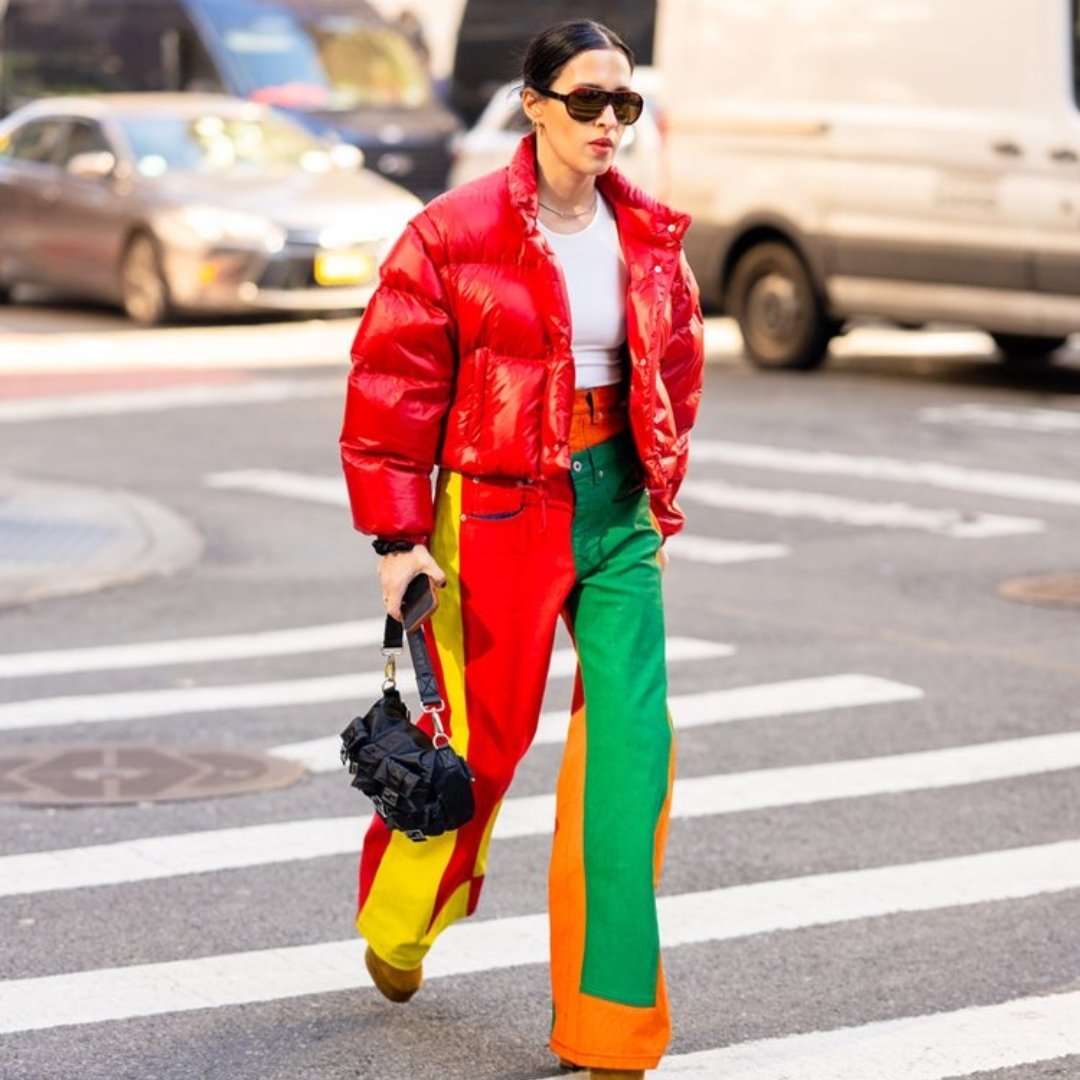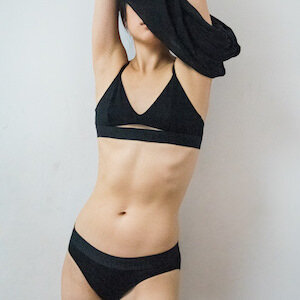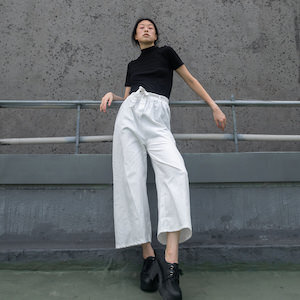#EffTheStyleRules Instagram Challenge
This past week, I participated in the #EffTheStyleRulesChallenge on Instagram hosted by Gabbie (@timorous.me), E (@eis4extra), and Zoya (@ilsaengel). In this challenge, we examined common style rules and reflected upon how these expectations enforced privilege across gender, class, body size, and more.
Growing up, we’re told what to wear and how our clothing can influence the perception that others have of us. As the years progress, these (sometimes unspoken) assumptions end up embedded in our subconscious. This unique and radical challenge provided us an opportunity to slow down and really dive into our preconceived notions about certain fashion styles and why it is that we wear the things that we do.
This blog post is a summary of the outfits I created for this challenge as well as my thoughts on the topics that they addressed.
Day 1: Eff Color Coordination
How many times have you been told that you should or shouldn’t wear certain colors? That certain colors made you look washed out or that certain colors (like black/brown or navy/black) never go together? Why is it that certain colors are perceived as unprofessional and too loud for corporate environments?
Day 1 of the #effthestylerules challenge asked us to dive into all these questions and more.
The tips that we’re given for color coordination center around two categories:
1. Color flattery or the conversation around using color in a way that will enhance your natural beauty
2. “Tasteful” use of color by putting restrictions on combinations that are deemed loud our unsightly by society.
I think the first category is pretty straightforward and this idea of color flattery is largely rooted in our expectations around health. The color flattery tips encourage us to wear colors that emphasize our hair/skin color and avoid colors that "wash us out." While it's understandable that some beauty standards are based around this idea of emphasizing the "glow from within," at the same time, it's like, why is my level of perceived health of any concern to you?
One conversation that I came across during this challenge was E’s story about how her relatives told her to never wear pastels because they would make her look darker. This was a conversation that I personally never grew up with, but I think it’s really interesting because it ties in color flattery with the beauty standard of a lighter complexion even in non-white communities.
Let's move on to this second category of tips.
For a long time, I avoided bold colors because I was afraid to make a statement as a woman of color. I was taught by my parents and by society to minimize my presence and to fade into the background of blacks, blues, and greys as a survival tactic.
I think this conversation is partially rooted in our expectations for class as well. We're taught that people of a higher class are subtle with how they communicate and avoid saying divisive things because that simply isn't the polite thing to do. They're taught to maintain the status quo and I think color and clothing choice can be a reflection of that mentality as well.
As an eff you to that mentality, I chose to wear an outfit pairing multiple bright colors together.
Yellow floral wrap dress, Old fast fashion 2018
Burgundy crop tank, Old fast fashion 2014
Green emerald skirt, Old fast fashion 2016
Orange scarf, #Raidedmomscloset
Day 2: Eff Figure Flattery
As someone who is straight-sized, I have it easy. The expectations for figure flattery are more lenient on me and with the rise of athleisure, both body-conforming clothes and oversized clothing are now trendy among thinner bodies.
In anticipation of Day 2’s prompt, I googled “figure flattery rules” and the first article by Real Simple that showed up was absolutely ridiculous. Some of the tips that they included were, “Check that your bra is doing its job of lifting you up where you belong: Nipples should be exactly between your shoulders and elbows," and "use tailored silhouettes in structured fabrics—say, a wool blazer or a cotton A-line—as body armor to hide jiggly bits."
While I have nothing against structured outfits or the use of bras for support, the demeaning language that often surrounds figure flattery is what I found problematic.
So cheers, here’s to saying eff figure flattery. I’ll wear what I want to wear, regardless of what it makes you think of me.
Black dress, Old fast fashion 2014
Grandma cardigan, Old fast fashion 2016
Plaid blazer, #BasementFind
Black hat, Old fast fashion 2012
Black platform boots, Old fast fashion 2016
Day 3: Eff Classy
This is one prompt that caught me off guard. Prior to this challenge, I had never actively reflected upon “trashy” and “classy” languaging, and Day 3 was a wake-up call to how closely classicism is intertwined with fashion.
When I think about the word classy, my association is with simplicity, elegance, and of course, modesty. When I think about trashy, my thoughts summon up poor quality clothes and exposed skin.
Why is it that simplicity, elegance, and modesty are associated with (higher) class? Does it have to do with people in power wanting to control our behaviors, thoughts, and self-expression?
This prompt made me also wonder why modesty was associated with class not just in American/Western culture, but in other cultures as well (I’m primarily thinking of Eastern cultures because that’s what my experience has taught me).
When I posed a question asking about the history of clothing and class in my Instagram caption, Brenda (@b_incolor) recommended that I check out iHeartRadio’s Dressed podcast and that is one thing that I will certainly do moving forward.
I dressed scantily for Day 3 with just a sports bra, lacy shorts, fishnet tights, and platform boots.
Black sports bra of recycled materials, Lole 2019
Fishnet tights, Old fast fashion
Black shorts, Old fast fashion
Black platform boots, Old fast fashion 2016
Day 4: Eff Gender Roles
Okay, Day 4 was hands-down the most difficult day. The conversation around gender roles in fashion is so closely interwoven with the conversation of gender identity and I felt that I didn’t have the authority to speak up about such topics.
It's been easy for me to wear what I feel like wearing because what I tend to go for aligns with what society expects from me. Clothing is a personal component of expression and for many people, dressing in a style that is more typically associated with a different gender can be an empowering way to express their identity.
For Day 4’s prompt, I struggled to honor the challenge and simultaneously respect the importance of this intersection between gender and fashion. The best way that I thought I could do this was to amplify the conversation by sharing accounts of those who have been doing the work for much, much, longer. For the Instagram accounts of some individuals and organizations that explore this topic in-depth, please view the full post here.
Brown shirt, #HandMeDown
Navy slacks, Old fast fashion 2015
Day 5: Eff The Dress Code
Honestly, the thought that this could be referencing the work-place dress code didn’t even cross my mind. I’ve been working remotely for over two years and have been out of a corporate environment for over three years so when I read “dress code,” I simply thought of the dress code for an event.
For me, Day 5 was the ultimate eff you. I took the prompt to wear whatever the f*ck I wanted and on that particular day, I wanted to go with a simple lacy bralette and dramatic striped skirt.
#Mint ruffle bralette, Old Fast Fashion 2016
Black and white striped skirt, Old Fast Fashion 2016
Thank you to the challenge hosts for creating this insightful challenge. It definitely opened up a lot of unique conversations and stories. Did you participate in this challenge? What was your biggest takeaway? Which day was most challenging?
G




















